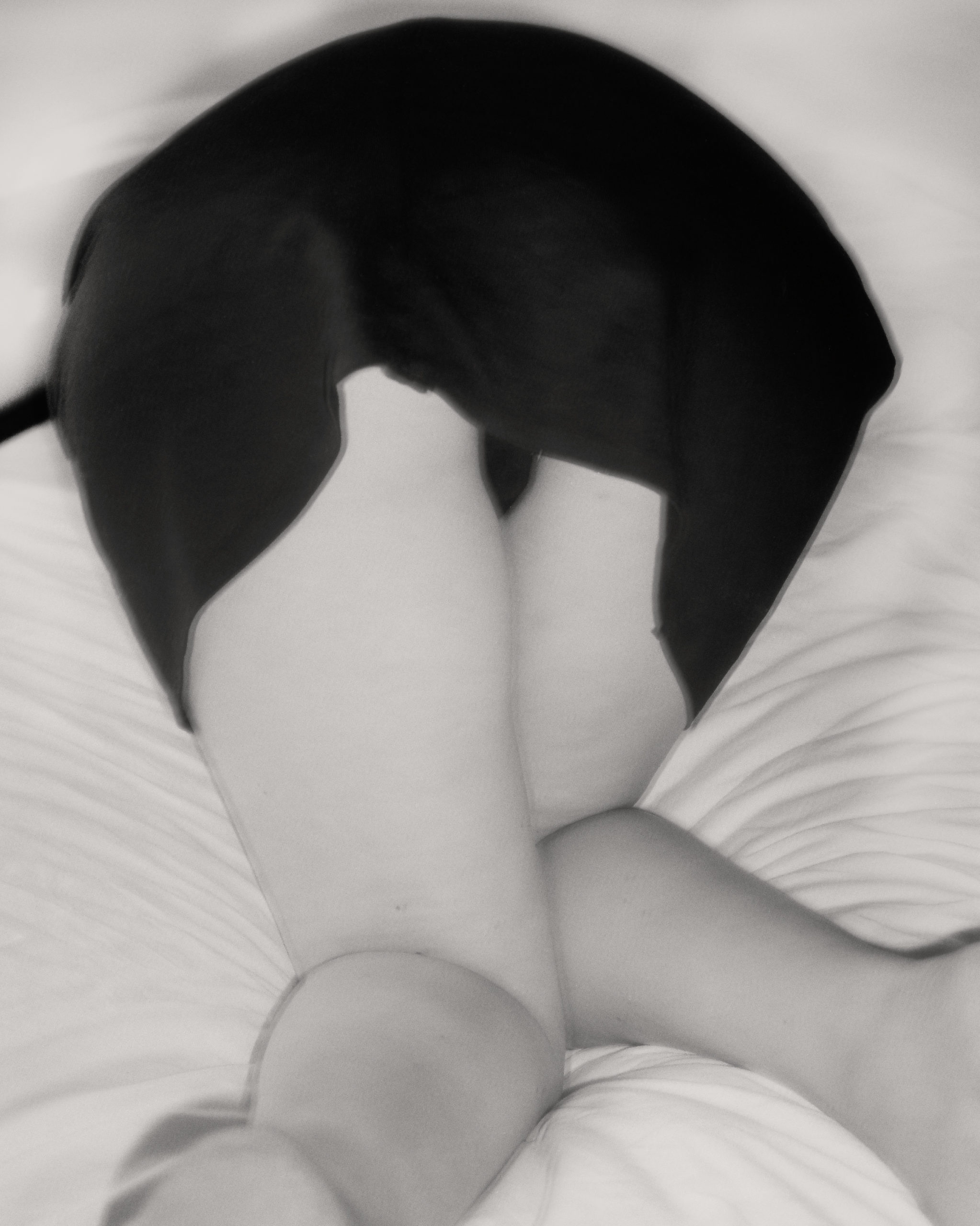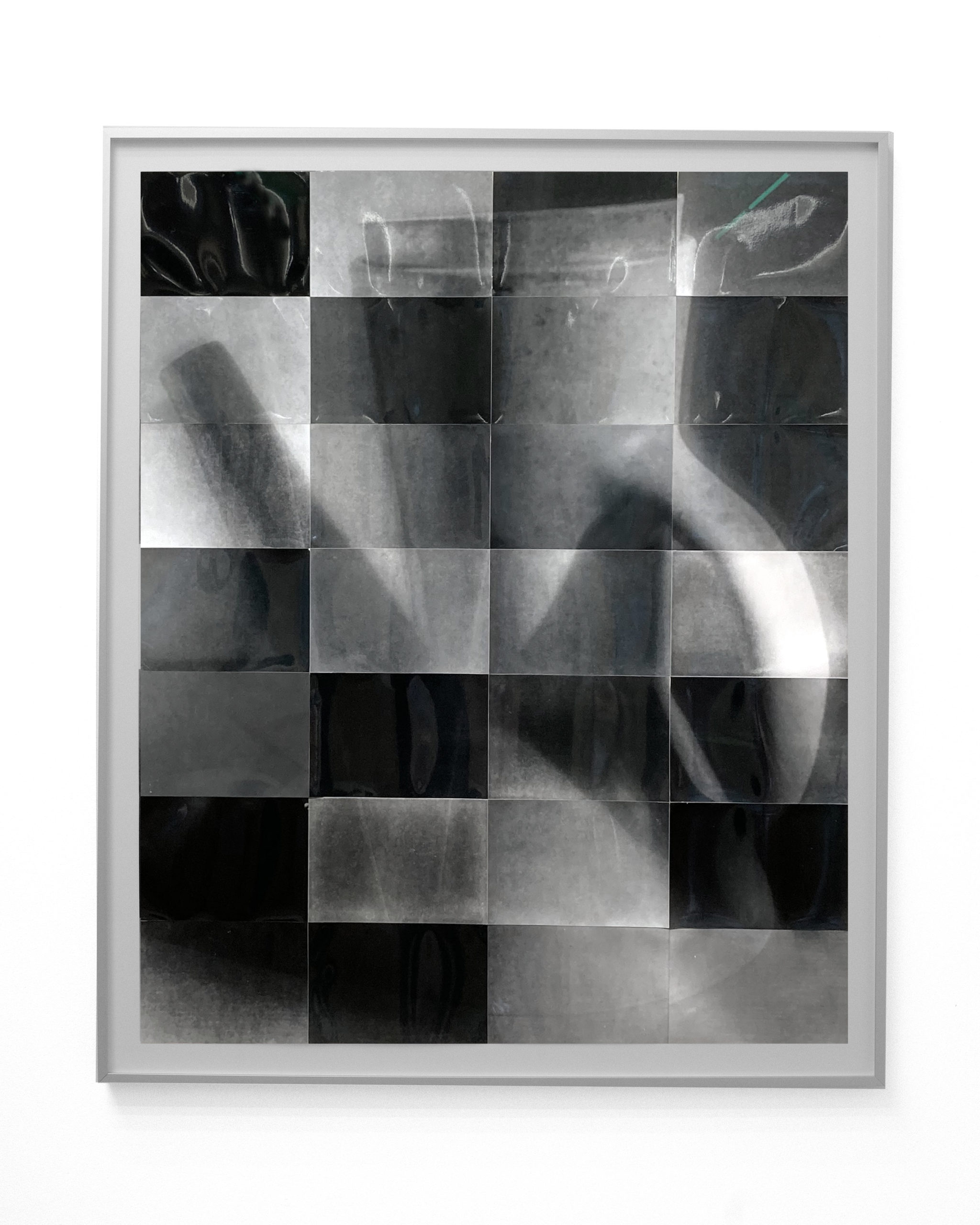














The works of Belgian photographer Thomas Vandenberghe (1985) can come across as vaguely familiar – like a whistled melody one can’t quite place. These images indeed arrive from a place of familiarity, being the mementos we may have once held in our hands, or kept safe and treasured in a box. Tattered and ripped, they might even have been in our wallets for long — either way, they seemingly await one day being rediscovered.
Vandenberghe once worked at a one hour service photo lab: having countless encounters with images not meant for strangers’ eyes, he came to occupy the role of the innocent voyeur, while turning the private moments of others into physical artifacts. This is where his fascination for the vernacular and the imperfect shot started. Eventually, holding these amateur snapshots in high esteem, Vandenberghe sought to emulate their unpretentious, delightfully spontaneous nature in his own body of work.
Almost exclusively applying point-and-shoot (compact) cameras and analogue processes provides Vandenberghe with the necessary tools to create his visual diary in photographs, as we are allowed momentary glimpses into life behind closed doors: clandestine meetings with lovers past and present, imperfect studies of simple household objects that take his momentary fancy, or a certain personal fondness for the ubiquitous and timeless flower. His still lifes, in particular, form one end of a silent dialogue with the works on paper of artist and partner Lien Buysens, through which one may trace the subtle hints of artistic exchange at work.

The various iterations of each still life are often displayed together, so that one may study the discrepancies between each singular piece, made unique by way of the unpredictability of darkroom chemical processes.
The darkroom is Vandenberghe’s playground: within it, he opens himself up to the possibility for accidents and surprises, and to the capacity for experimentation that comes to us so easily in childhood. That sense of play, and the tactility emphasized in the tearing and re-assembling of images, resonate in the final compositions that always manifest in physical print form. In revealing and accepting the imperfections and blemishes inherent in the physicality of print on paper, Vandenberghe reinforces the photographic medium’s roots in the analogue form.
The gelatin silver process that Vandenberghe most commonly employs in his final black and white prints is one that allows for a reappraisal of nuances in tone and shadow, and there is an inclination towards simplicity in his compositions. His images rarely feature more than one object or subject, and the ones he does choose to portray cannot be tethered to specific time periods or epochs. His mise-en-scene is not necessarily, as some have put it, timeless, but rather, time-conscious.
As the project’s title — In the time before us, there was a time before us — suggests, memory and time form an integral part of both his conceptual and practical approaches to photography. Sometimes, Vandenberghe’s negatives lay years in wait before they are deemed ready to be manifested in print; in the darkroom, he will often dabble with different exposure times to yield unpredictable results. The lines and silhouettes in his photographs are rarely distinct or sharp, rather like our memories over time: details become hazy, and hazier still, until all that sustains them is the tenacity of our emotions.
Thomas Vandenberghe (1985) is a Belgian photographer currently based in Ghent, and is a founding member of the artist-run space NO/ gallery, also located in Ghent. He was previously featured in issue #58 of GUP magazine, and the project above is currently on show at the Stieglitz 19 Gallery in Antwerp until the 10th of April.